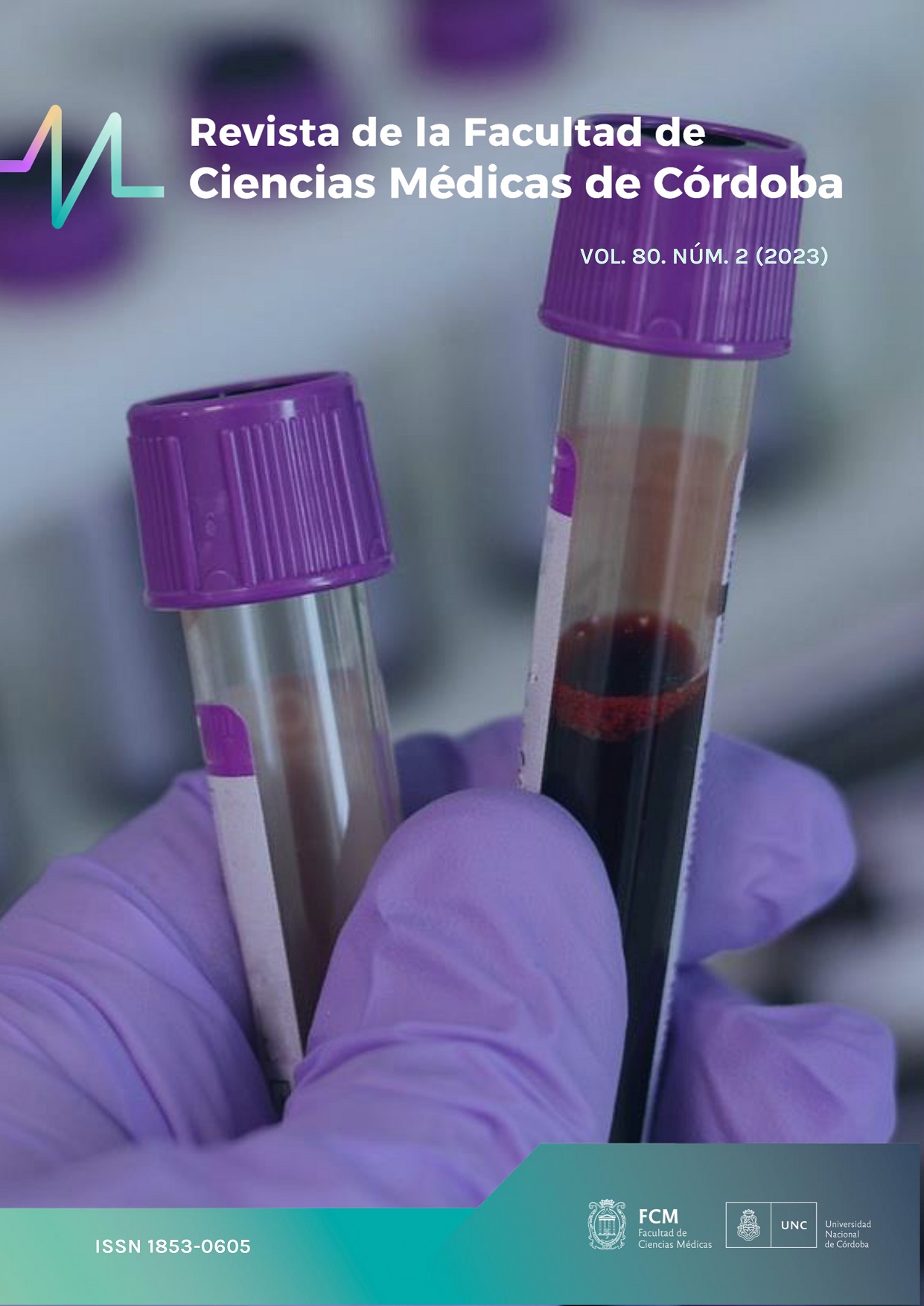Influence of diets varying in lipid and protein content on the histopathologic variety of murine salivary gland tumors induced by 9, 10 - dimethyl - 1, 2 - benzanthraceno (DMBA)
Keywords:
salivary glands, tumors, mice, dietary lipids, soy protein, histopathologyAbstract
The purpose of this study was to analyze the influence of diets varying in lipids and proteins on the histopathologic variety of murine salivaiy tumors induced by DMBA. 117 BALB/c mice were assigned to experiments one (El: lipids, males) and two (E2: proteins, males and fima1es). El comprising Soy oil (SO): Corn oil (CO. control); Fish oil (FO) and 01cm (0) groups and E2, soy protein (SP) and casein (C) groups. Tumors were induced by DMBA and the animaJs were sacrificed t week 13' post-induction. Tumor volume was calculated. Tumor sections were stained with HE for histopathologic evaluation. No significant association was found between tumor volume and dietary condition (p> 0. 05). In El, FO animais developed mainly carcinomas (C) (58,8%), the sarcomas (S) and carcinosarcomas (CS) being especially of highgrade type (tumors <600 mm3). In E2, SP animais developed mainly C (55.61/1 o). Although no significantly different (p>0.05), 5 and C were more frequent in female and maTe mice, respectively. In both El aral E2, the biggest tumors (>600 mm3) were mainly high-grade 5 (87.5%-80%). Dietary fat and soy protein appear to influence the tumor histopathology and thus its prognosis.
Downloads
References
Frith CH, Heath JE. Tumors of the salivary gland. In: Turusov VS, Mohr U. eds. Pathology of tumors in laboratory animals Vol. II. Tumors of the mouse. IARC Scientific Publication N°111, 1994; 115-141.
Zamasi A. Kohgo T, Shindoh M, Iizuka T, Amemiya A. Induction of adenocarcinomas in the submandibular salivary glands of female Wistar rats treated with 7,12- dimethylbenz(a)anthracene. Arch Oral Biol 1996; 29:221-224.
Sumitomo 5, Hashimura K, Mor¡ M. Growth pattern of experimental squamous celi carcinoma in rat submandibular glands – an immnunohistochemical evaluation. EurJ Cancer B Oral Oncol 1996: 3213: 97-105.
Takal Y. Murase N, Hosaka M, Kawamura K, Mor¡ M. Immunohistochemical localization of keratin in experimental carcinoma of the mouse submandibular gland. J Oral Pathol 1986: 15:5-10.
Actis AB, Eynard AR. Influence of environmental and nutnitional factors on salivary gland tumorigenesis with a special reference to dietary lipids. J Clin Nutr 2000: 54: 805-8 10.
Actis AB, López CB, Joekes S, Eynard AR N-3, n-6 and n-9 dietary fatty acids modulate the growth parameters of murine salivary gland tumors induced by dimethylbenzanthracene. Prostagl Leuk Essent FattyAcids 1999:61: 259- 265.
Roynette CE, Calder PC, Dupertuis YM, Pichard C. N-3 polyunsaturated fatty acids and colon cancer preverition. Clin Nutr 2004: 23: 139- 51.
Vij U, Kumar A. Phyto-oestrogens and prostatic growth. Natl Med J India 2004: 17: 22-6.
Eynard AR, López CB. Conjugated linoleic acid (CLA) versus saturated fats/cholesterol: their proportion in fatty and lean meats mayaffect the nisk of developing colon cancer. Lipids Health Dis 2003; 2: 6.
LarieJ, Mansel RE, Jiang WG. Expression of human delta-6-desaturase is associated with aggressiveness of human breast cancer. mt J Mol Med 2003; 12:253-7.
Linseisen J, Piller R, Hermann 5, Chang- Claude J. Dietary phytoestrogen intake and premenopausal breast cancer risk in a German case-control study. mt J Cancer 2004; 110: 284- 90.
Rendon RA, Stanietzky N, Panzarella T. The natural history of small renal masses. J Urol 2000:164:1143-1147.
Ellis GL, Auclair PL. Malignant epithelial tumors. In: Atlas of Tumor Pathology. Tumor of the salivary glands. Third series. Fascicle 17. Armed Forces Institute of Pathology: Washington DC. Bethesda, Maryland, 1996.
El-Asfahani A, Higashi GI, Ahmed MA. Chemical carcinogenesis of submandibular salivary gland in BALB/c mice and syngeneic passage of the tumor. Oral Surg Oral Med Oral Pathol 1979; 48: 47-52.
Actis AB, Cremonezzi D, Joekes S, Lampe J, Valentich MA. Growth responsiveness of murine DMBA-induced salivary rumors to a soy protein-based diet rich in isoflavones. Nutr Res 2006. In press.
Glucksmann A. Cherry CP. Tumors of the salivaryglands. In: TURUSOVVS, eds. Pathology of tumors in laboratory animals Vol. I. Tumors of the rat. Part 1. Switzerland: IARC Scientific Publicatiori N°5, 1973; 75-81.
Dimery 1W, Jones LA, Verjan RP, Raymond AK, Goepfert H, Hong WK. Estrogen receptors in normal salivary gland and salivary gland carcinoma. Arch Otolaryngol Head Neck Surg 1987; 113:1082-5.
Djoseland O, De Besche A, Hoglo 5, Rennie PS. Steroid metabolism by normal and neoplastic parotid tissue. J Steroid Biochem 1982; 16:397-402.
Downloads
Published
How to Cite
Issue
Section
License
The Faculty of Medical Sciences Journal (RFCM) subscribes to the Open Access policy and does not charge authors fees for publishing, nor does it charge readers fees for accessing published articles (APC).


